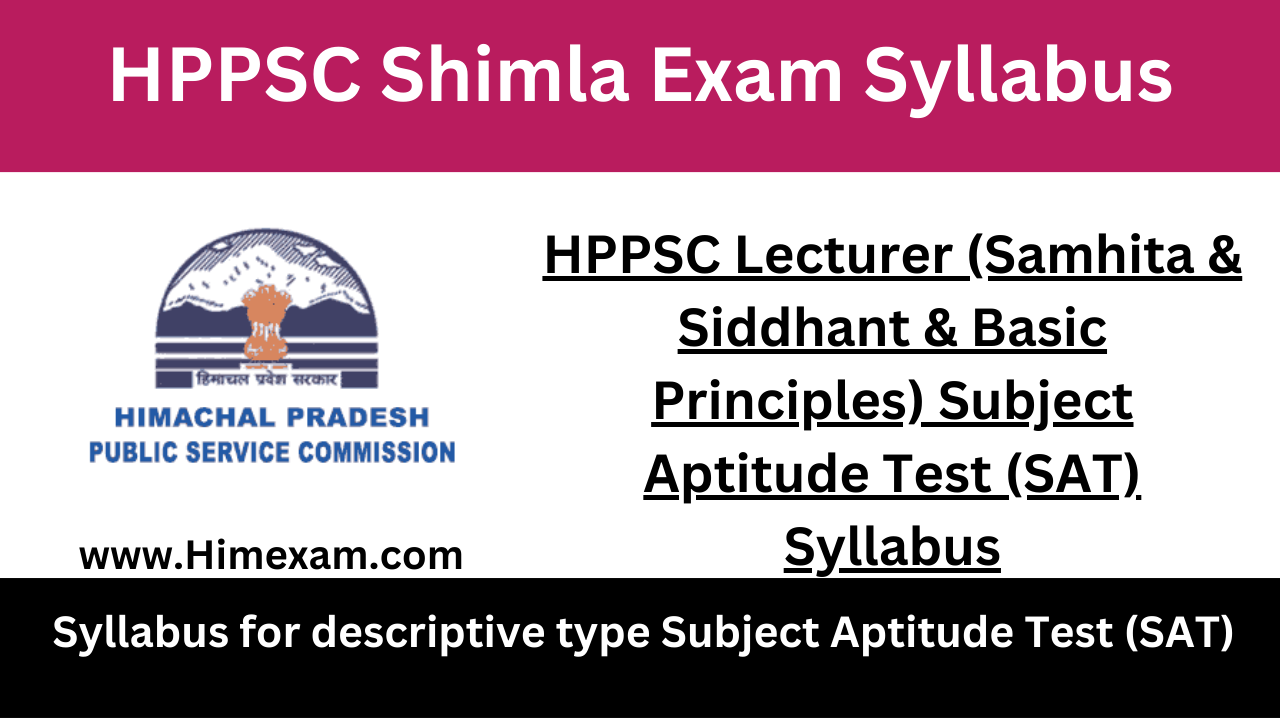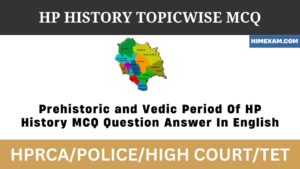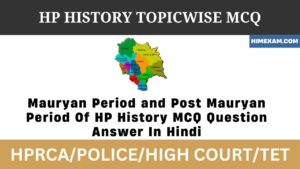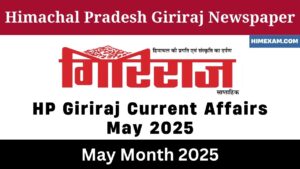Table of Contents
ToggleHPPSC Lecturer (Samhita & Siddhant & Basic Principles) Subject Aptitude Test (SAT) Syllabus
HPPSC Lecturer (Samhita & Siddhant & Basic Principles) Subject Aptitude Test (SAT) Syllabus:-Syllabus for descriptive type Subject Aptitude Test (SAT) for recruitment to post of Lecturer (Samhita & Siddhant & Basic Principles), Class-I (Gazetted) in the AYUSH Vibhag, H.P. The descriptive SAT paper shall have two parts, i.e. Part-I and Part-II of 03 hours duration having 120 Marks. The SAT paper shall cover the following topics of Master degree in Samhita & Siddhant & Basic Principles level.
PART-I (60 MARKS)
1. Learning and Teaching methodology available in Samhita Tantrayukti, Tantraguna, Tantradosha, Tachchilya, Vadamarga, Kalpana, Arthashraya, TrividhaGyanopaya, teachingof Pada, Paada, Shloka, Vakya, Vakyartha, Arthavayavashah analysis of the verses, concept of Siddhant, meaning and scope of different Sthana and Chatushka of Brihatrayee,
2. Manuscriptology- Collection, conservation, cataloguing. Critical editing through collation, recension, (A critical revision of a text incorporating the most plausible elements found in varying sources), emendation (changes for improvement) and textual criticism (critical analysis) of manuscripts.
3. Concept of Bijachatustaya (Purush, Vyadhi, Kriyakaal, Aushadha according to Sushrut Samhita) and its literary and therapeutic application.
4. Introduction and Application of Nyaya (Maxims) Like Shilaputrak Nyaya, Kapinjaladhikaran Nyaya, Ghunakshara Nyaya, Gobalivarda Nyaya, Naprishtah Guravo Vadanti Nyaya, Shringagrahika Nyaya, ChhatrinoGacchhanti Nyaya, Shatapatrabhedana Nyaya, Suchikatah Nyaya.
5. Importance and utility of Samhita in present era, Importance of ethics and principles of ideal living as mentioned in Samhita in the present era in relation to life style disorders, Interpretation and co-relation of basic principles with contemporary sciences.
6. Definition of Siddhanta, types and applied examples in Ayurveda, Ayu and its components as described in Samhita, Principles of Karana-Karyavada, its utility in advancement of research in Ayurveda, Theory of Evolution of Universe (Srishti Utpatti), its process according to Ayurveda and Darshana
7. Importance and utility of Triskandha (Hetu, Linga, Aushadha) and their need in teaching, research and clinical practice, Applied aspects of various fundamental principles likeTridosha, Triguna, Purusha and Atmanirupana, Panchamahabhuta Siddhanta, Aahara- 2 Vihara, Scope and importance of Pariksha (Pramana), Importance of knowledge of Sharir Prakriti and Manas Prakriti.
PART-II (60 MARKS)
1. Charak Samhita: Charak Samhita complete with Ayurveda Dipika commentary by Chakrapani, Introductory information regarding all available commentaries on Charak Samhita,
2. Sushrut Samhita &Ashtang-Hridayam: Sushrut Samhita Sutra sthana and Sharir- Sthana, with NibandhaSamgraha commentary by Acharya Dalhana, Ashtang-Hridayam Sutra Sthanamatram with Sarvanga Sundara commentary by Arun Duttaand AyurvedaRasayanacommentary by Hemadri. Introductory information regarding all available commentaries on Sushrut Samhita and AshtangHridaya. 2. Ayurvediya and Darshanika Siddhanta: Introduction and description of philosophical principles incorporated in Charak Samhita, Sushrut Samhita, Ashtanga Hridaya,AshtangSamgraha,
3. Analysis of principles specially Loka-purusha Samya, Shadpadartha, Pramana,Importance and application ofdifferent Vaada likePilupakaVaada, PitharpakaVaada, Karana-Karyavada, Satkaryavad, Arambhavada, Parmanuvada, Swabhavoparamvada, Swabhava-vada, Yadricha Vada, Karmavada, KshanabhangurVaada
4. Practical applicability principles of Samkhya-Yoga, Nyaya-Vaisheshika, Vedanta and Mimansa, Charvaka, Jain and Bauddha Darshana in present context.
5.Post independence Development of Ayurveda: Education, Research, Globalisation of Ayurveda, Introduction of Ministry of AYUSH, NCISM, CCRAS, RAV, Introduction to National institutes like ITRA, NIA, AIIA, BHU.
6. Review of types of journals, review of Articles, publication ethics etc.
7. Comparative Study of Samprapti and Chikitsa Sutra mentioned by Brihathayee in diseases like Jwara, Raktapitta, Kushtha, Prameha, Unmada, Apasmara, Atisaar, Grahani, VataraktaAmavata, Shwas-Kasa, Pandu-Kamla, Urustambha, Vatavyadhi, Shosha, Amlapitta, Udara, Yakshma etc.
8. Critical analysis & applied study of basic concepts likePrakritisamasamveta, Vikritivishamsamveta, concept ofsama- Nirama, Agni, Ojus and Ojovyapad-Ojavistransa- 3 Ojakshaya, Vyadhikshamatva, Kaal-Akalamrityu, Satmya, NidanarthakaraRoga, AnubandhChatushtya, NaishthikiChikitsa, Manas Tattva Siddhanta, Atma Nirupana.
9. Introduction to Laghutrayee with available Sanskrit commentaries
| CLICK HERE |
More Pages:-
हेलो दोस्तों ,आपका हमारी वेबसाइट Himexam.com पर स्वागत है। जैसा की आपको पता है हमारी वेबसाइट Himexam.com आपको समय-समय पर सभी HP Govt Jobs & All India Govt Jobs की Notifications प्रदान करवाती है। साथ ही साथ Himachal Pradesh Exam Previous Paper और Himachal Pradesh GK ,Himachal Pradesh & National +International Current Affairs के सभी नोट्स मुफ्त उपलब्ध करवाते है। हमारी वेबसाइट के अलग अलग प्लेटफार्म पर pages & Group बने है जैसे की facebook ,Telegram और Instagram .. अगर आप हिमाचल के किसी भी पेपर की तैयारी कर रहे हो तो जल्दी से इन groups के साथ जुड़ जाएं इनके लिंक नीचे table में दिए गए है।
Join Us:-
| Like Our Facebook Page | Click here |
| Join Us oN Telegram | Click here |
| Join Us On Instagram | Click Here |








